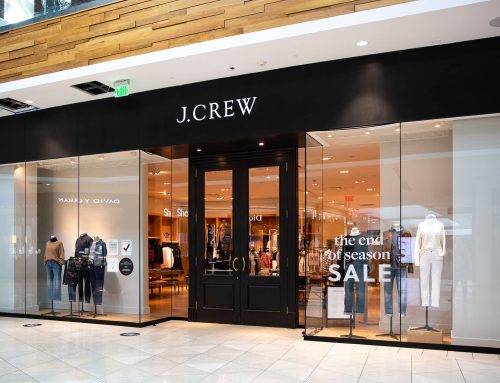We may earn money or products from the companies mentioned in this post at no additional cost to you.
The Fast Fashion Dilemma: Unveiling the Ultimate Solution to Overconsumption and Environmental Impact
Do you love fashion but hate the environmental impact of fast fashion? You’re not alone. Fast fashion is a growing problem, with the industry’s waste and pollution endangering our planet. Fortunately, several solutions to this issue can help us save the environment while keeping up with current trends. More brands are embracing Sustainable fashion more than ever, and consumers have an essential role in making this shift.
Additionally, regulations and policies are helping to make sustainability a priority for companies. Education and awareness are also essential for change and innovative technology that can help reduce waste and energy consumption in production processes. Plus, plenty of fashionable brands rely on something other than fast fashion practices. So let’s learn more about these solutions to enjoy stylish looks without sacrificing our planet!
Key Takeaways
- Sustainable fashion is a solution to the fast fashion problem, as it uses eco-friendly production methods and promotes ethical labor practices.
- Consumers can make a difference by avoiding fast fashion and supporting brands with transparent supply chains and sustainable materials.
- Regulations and policies are being introduced to encourage sustainable production practices, such as extended producer responsibility laws and restrictions on hazardous chemicals.
- Technology and innovation play a crucial role in creating more sustainable products and processes, enabling brands to keep up with consumer demand while introducing sustainable practices.
Sustainable Fashion
Sustainable fashion is the answer to fast fashion’s unsustainable practices; it’s an Eco-friendly way to stay stylish! Solutions to fast fashion have become increasingly important in recent years as the environmental impacts of traditional manufacturing processes and materials have come into focus. Sustainable fashion seeks to reduce environmental negative effects by using sustainable production methods such as organic fabrics, natural dyes, and up-cycled materials. These environmentally friendly practices also minimize waste and pollution while promoting ethical labor practices.
In addition, sustainable fashion can be trendy and stylish without sacrificing comfort or quality. Designers are creating more fashionable pieces with recycled materials that look just as good as their conventional counterparts – but without the associated environmental damage. With a wide variety of options available today, there’s no excuse for not being able to find something fashionable that fits your style without compromising sustainability or ethics.
The rise in popularity of sustainable fashion has caused many traditional retailers to rethink their business models and shift towards more sustainable sourcing methods. Companies like Patagonia have taken the lead in this area by committing to using only 100% recycled materials for their products. This commitment has been well-received by customers who know they’re supporting responsible companies when purchasing from them.
We all need clothes; why not make sure those clothes are made responsibly? Sustainable fashion allows us to do just that – enjoy both style and sustainability at once! Fast fashion solutions exist – let’s use them to ensure our wardrobes are chic and earth-friendly.
The Role of Consumers
Consumers play a crucial role in curbing the impacts of unsustainable production practices. Whether it’s through making informed decisions when shopping, using their voice to demand better from companies, or supporting businesses that have ethical practices, the power to make a difference lies with consumers:
- 1Avoid fast fashion retailers and instead shop for timeless pieces at vintage stores, thrift shops, or second-hand markets.
- Research before buying – look for brands with transparent supply chains and ones that use sustainable materials like organic cotton and Tencel® lyocell – both are more eco-friendly than conventional fabrics.
- Get involved in industry initiatives – sign petitions and join campaigns that are fighting for greater transparency in the fashion industry.
- Support small businesses – purchase from local makers or independent labels who are doing their bit to create slower collections that embrace quality over quantity while still being fashionable!
The most important thing is to be conscious of your purchasing habits; consider what you need versus what you want, how often you’ll wear it, and whether there’s something similar already existing in your wardrobe before buying new clothes. Making these mindful choices can help reduce waste created by fast fashion while still living an on-trend lifestyle!
Regulations and Policies
Governments are starting to recognize the need for regulations and policies that encourage sustainable production practices in the fashion industry. As awareness of fast fashion’s environmental and social impacts grows, more countries are introducing laws that aim to reduce waste and promote sustainability. Several countries have implemented extended producer responsibility (EPR) laws, requiring companies to take responsibility for their products throughout their life cycle. This means they must find ways to reuse or recycle materials at end-of-life.
In addition, some governments are passing legislation to restrict hazardous chemicals used in production processes, such as dyes, pesticides, and solvents. These measures can help reduce water pollution and other environmental effects caused by factories manufacturing clothes. Consumers, too, have a role to play in this process: by buying from ethical brands that follow sustainability guidelines, consumers are helping create demand for sustainable fashion solutions.
Innovative companies also face incentives through governmental policies like subsidies or rewards for reaching specific targets related to emissions reductions or energy efficiency improvements. With these financial benefits, businesses can invest in new technologies to produce more sustainably without sacrificing quality or style.
The fashion industry is making strides toward greater sustainability, but much work remains left to be done. By combining consumer education initiatives with regulatory measures and incentives for businesses, we can create an environment where sustainable fashion becomes the norm rather than an exception.
Education and Awareness
Raising awareness of fashion’s environmental and social impacts is essential for creating a more sustainable industry. Education is key in this process, from raising consumer consciousness about what they purchase to educating businesses on creating products with less environmental footprint. There are many ways to raise awareness, such as through campaigns and events, which can be organized by both government bodies and non-profit organizations. Additionally, plenty of online resources are dedicated to informing people about fast fashion’s consequences.
The media can also play an essential role in spreading the message by highlighting stories about sustainable alternatives and the challenges fast fashion poses. Social media influencers can help, too, as they have great reach among their followers, who will often take the message seriously. Furthermore, educational initiatives such as workshops and seminars can be beneficial in encouraging individuals to make more mindful choices when it comes to buying clothes or accessories.
It is clear that education and awareness are critical components in tackling the fast fashion problem – but ultimately, it should begin with a willingness from consumers to shop more consciously and demand better standards from companies manufacturing clothing items. By taking small steps towards being more aware of our shopping habits, we can slowly start making a big difference in how we consume fashion today.
Technology and Innovation
By embracing technology and innovation, the fashion industry has the potential to create more sustainable products and processes. Technologies such as 3D printing, artificial intelligence (AI), Blockchain, and virtual reality (VR) can all be used to minimize waste, reduce production costs, increase the efficiency of supply chain management, and optimize customer experience.
For instance, 3D printing can help designers create clothes faster and in higher quality with fewer materials used. AI can help predict trends quickly for designers to develop new products efficiently. At the same time, Blockchain can provide full traceability of clothing from raw material sourcing right through to sale. Finally, VR allows customers to virtually try on clothes before they buy them without having to physically go into stores or have items shipped back and forth.
These technologies reduce waste and save time and money for companies. They enable brands to keep up with fast-paced consumer demand while introducing sustainable practices that benefit the environment. Additionally, they make it easier for consumers to shop responsibly – by giving them better access to information about where their garments are made to make informed decisions when buying clothes.
The fashion industry is taking steps towards sustainability, but there is still a long way to go before we see real change in terms of how clothing is produced and consumed. By investing in technology-driven solutions that enable transparency throughout the entire production process, businesses could be part of a much larger societal shift towards more eco-friendly manufacturing practices – ultimately helping us build a better future for generations to come.
What Are Some Brands That Are Not Fast Fashion
Now that we know technology and innovation can help slow the fast fashion industry, you may wonder which brands are not part of this trend. Luckily, a few sustainable fashion labels are out there trying to reduce their environmental impact.
Patagonia is one standout brand that creates apparel made from recycled materials such as plastic bottles or reclaimed cotton. Most recently, they released their own version of a “rental service” where you can borrow select pieces for up to three weeks—allowing customers to buy less and extend the life of clothing.
Another company successfully revolutionizing sustainability in the fashion world is Everlane. Instead of relying on traditional retail markup pricing models like other brands do, Everlane discloses exactly how much it costs to make each item they sell—so consumers know exactly what’s going into their purchase. They also only use ethical factories with fair working conditions and have started to experiment with new fabrics such as recycled polyester and Tencel lyocell (a fiber produced from wood pulp).
Reformation has taken transparency even further by creating an online calculator for shoppers so they can see the carbon footprint associated with each garment before buying it. Plus, Reformation turns fabric remnants into items like face masks and sells vintage clothing sourced from local thrift stores around the country.
These companies prove there is hope for a more sustainable future when it comes to fashion! With choices like these available to consumers now, shopping ethically no longer needs to be a difficult decision—it’s easier than ever before! So next time you’re looking for something new don’t forget about these sustainable options—you’ll look good while doing good!
Conclusion
You can make a difference in the fast fashion industry. As a consumer, you have the power to choose sustainable brands and support ethical practices. You can also play an active role in pushing for regulations and policies that protect people and the environment. Additionally, by raising awareness through education and supporting innovative technologies, you can help create a more sustainable future for fashion. Let’s all take steps to ensure that we are part of the solution rather than perpetuating the problem!





